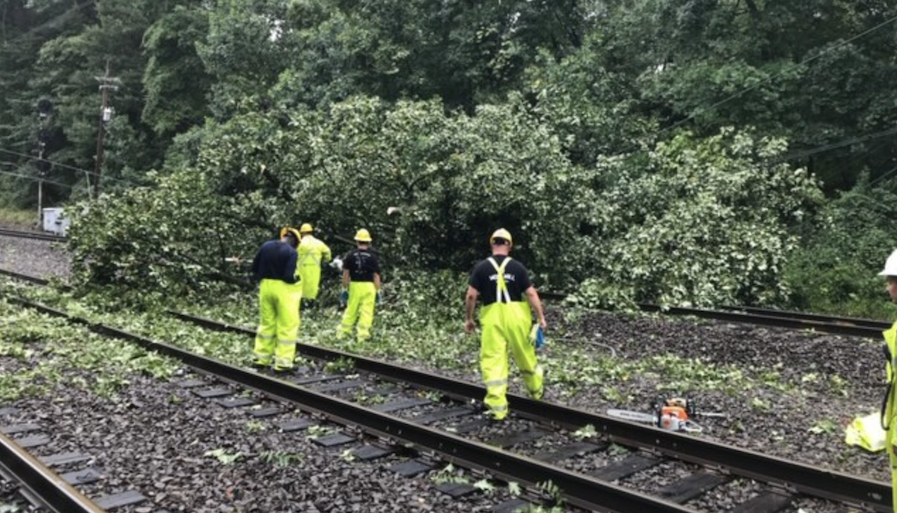Far from the most powerful storm to strike the Eastern Seaboard, Hurricane Isaias nevertheless proved disruptive enough to rival some infrastructure impacts from Superstorm Sandy in 2012 while also raising concerns about the potential of additional doses of destruction arriving in the coming months.
After bringing heavy rains and winds to Puerto Rico and the Bahamas, Isaias had reached Category 1 hurricane status before making landfall in southeastern North Carolina on Aug. 3. On its two-day run up the I-95 corridor, the storm spawned dozens of tornadoes and downed hundreds of power lines that, at one point, caused outages affecting more than 3.5 million utility customers in 13 states.
As of the morning of Aug. 10, power had been restored to 96% of households, with about 186,000 remaining without power, according to the Edison Electric Institute, a trade group for investor-owned utilities.
Even with sustained winds falling below hurricane speed during its northward trek, Isaias still packed a powerful punch, with gusts clocked at nearly 80 mph at several locations around New York City. Thousands of downed trees and damaged signal systems disrupted service on most of the region’s major above-ground transit systems.
By week’s end, the Long Island Railroad, Metro-North Railroad and NJ Transit were still running limited service on most lines as track-clearing work was still underway. But service on NJ Transit's heavily used Morris & Essex line remained suspended until Aug. 8.
The upper portion of a three-story building in Brooklyn, N.Y., collapsed as Isaias moved through the area, but investigators have not determined if the event was weather related. Nearby in Queens, a 60-year-old New York City apartment renovation contractor was killed when a large tree fell on his parked van during the storm. Most of the eight other fatalities attributed to Isaias resulted from residential clean-up activities.
Contractors’ pre-storm preparations left most major building sites along Isaias’s path unscathed by winds and flooding.
Gilbane Building Co., which has several large projects underway in the Philadelphia area, reported no unusual problems aside from having to suspend steel erection on a K-8 school due to high winds.
“We’ve been through hurricanes and nor’easters before, so we know what happens and how to prepare,” says spokesperson Wes Cotter, adding that COVID-19 worksite safety protocols didn’t hamper shutdown activities.
At Flatiron Construction’s $145-million Rodanthe Bridge project on North Carolina’s barrier islands, preparations to secure materials and specialty equipment were completed the Friday before Isaias was forecast to arrive.
“Fortunately, the storm tracked much further west than originally anticipated, so we only saw maximum winds in the tropical storm-force range, and there was no damage to the project site,” says Flatiron project manager Adrian Price. “By late Tuesday, August 4, we were able to return to the site and begin restoring all equipment to operating condition.”
Although flooding and overwash from Isaias’s arrival in coastal North Carolina caused temporary road closures, the storm’s impact on coastal infrastructure appears to have been small. The 5.4-ft storm surge recorded at Wilmington, N.C., broke a record set during Hurricane Florence just two years ago. Nearby Myrtle Beach, S.C., experienced a high tide four feet higher than predicted, the third-highest water level in the city’s history.
With nine named tropical storms already recorded during the 2020 Atlantic hurricane season, the National Weather Service’s Climate Prediction Center says conditions are ripe for more. The agency predicts the next four months could see as many as 16 additional named storms with sustained winds of at least 39 mph.
Of those, up to six could turn into major hurricanes, with winds topping 111 mph.
Flatiron’s Price says even with its minimal effects, Isaias provided a good opportunity to practice for future threats.
“Sometimes these storms can be quick to develop, and you don’t have much time to prepare,” he says. “Isaias showed that we can prepare the site in less than a day for tropical storms and about a day and a half for hurricanes.”


